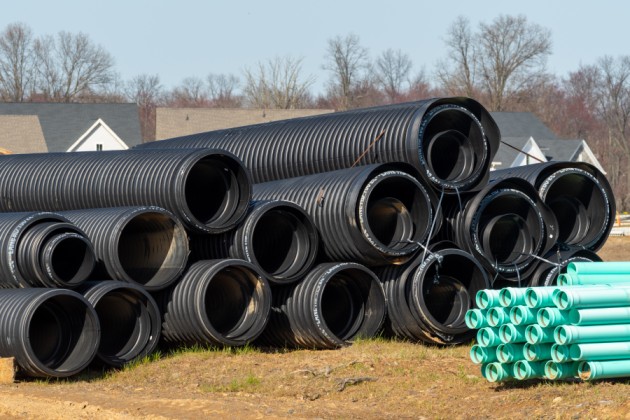
HDPE (High-Density Polyethylene) pipes are commonly used for various applications due to their durability, flexibility, and resistance to corrosion and chemicals. Here’s a brief overview of HDPE pipes:
Key Features:
- Material Strength: HDPE is a strong thermoplastic polymer, making it resistant to impact, weather, and corrosion.
- Durability: HDPE pipes have a long lifespan (typically 50 to 100 years), making them ideal for both residential and industrial use.
- Resistance: These pipes are resistant to chemicals, UV rays, and various environmental conditions.
- Flexibility: HDPE pipes are flexible, allowing for easy installation, even in areas with challenging terrain.
- Leak-Free Joints: The pipes are joined using heat fusion or mechanical fittings, which ensure a strong and leak-proof connection.
Common Applications:
- Water Distribution: Used for potable water supply lines due to their resistance to bacterial growth and corrosion.
- Sewer and Drainage: Ideal for both stormwater and wastewater management systems.
- Gas Supply: Used for transporting natural gas and other fuels.
- Irrigation: Common in agricultural irrigation systems because of their ability to handle high pressures.
- Telecommunication and Electrical Conduits: HDPE pipes are often used as conduits for electrical and communication cables.
Advantages:
- Cost-Effective: The longevity and low maintenance of HDPE pipes contribute to cost savings.
- Environmentally Friendly: HDPE is recyclable, contributing to sustainability efforts.
- Smooth Interior: The smooth surface of HDPE pipes reduces the chances of sediment build-up, improving the flow rate.
Standards and Specifications:
- HDPE pipes are manufactured according to international standards like ASTM (American Society for Testing and Materials), ISO (International Organization for Standardization), and other local standards.
Pipe sizes vary from small diameters (less than an inch) for residential applications to large-diameter pipes (several feet) for industrial projects.
